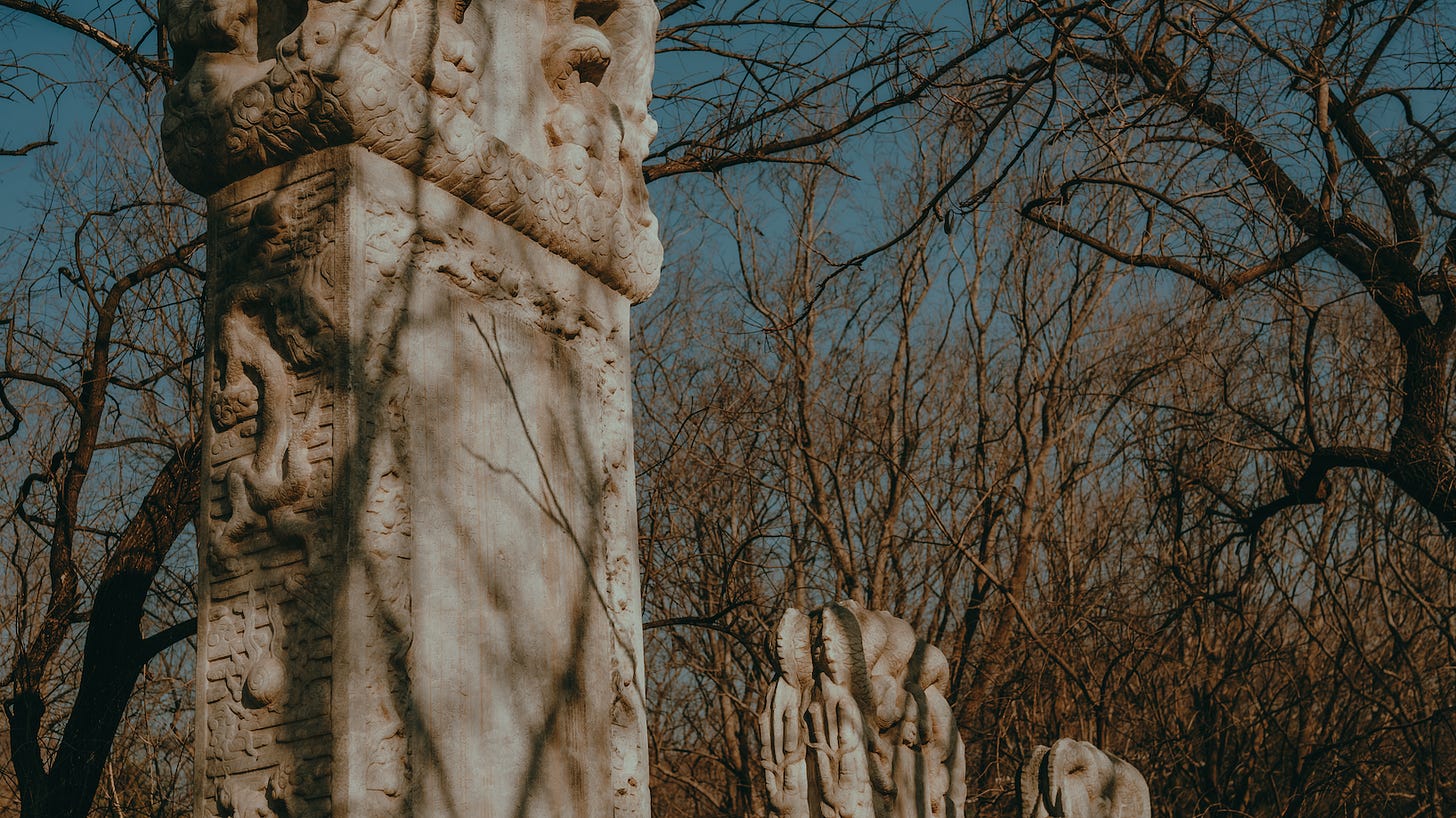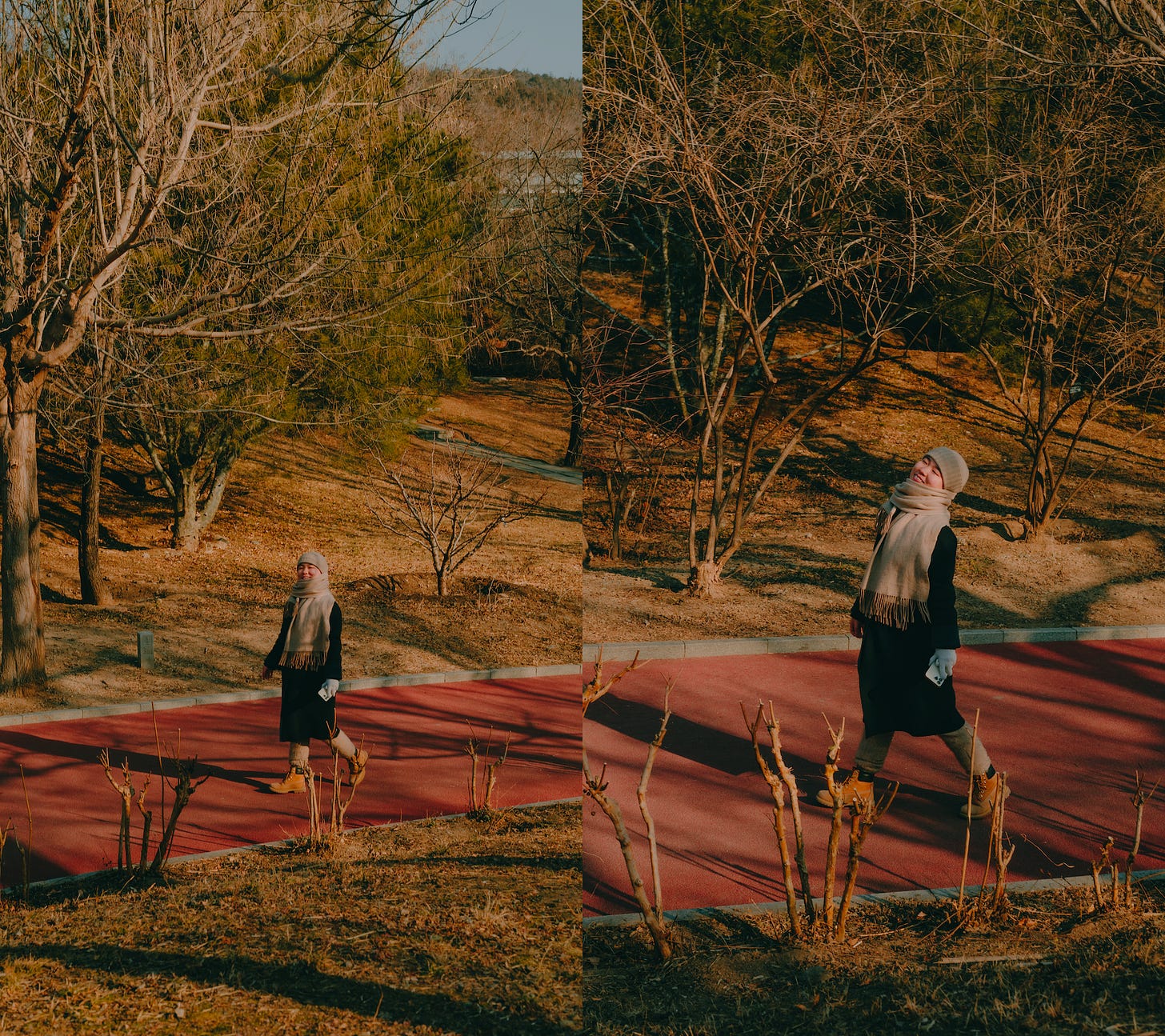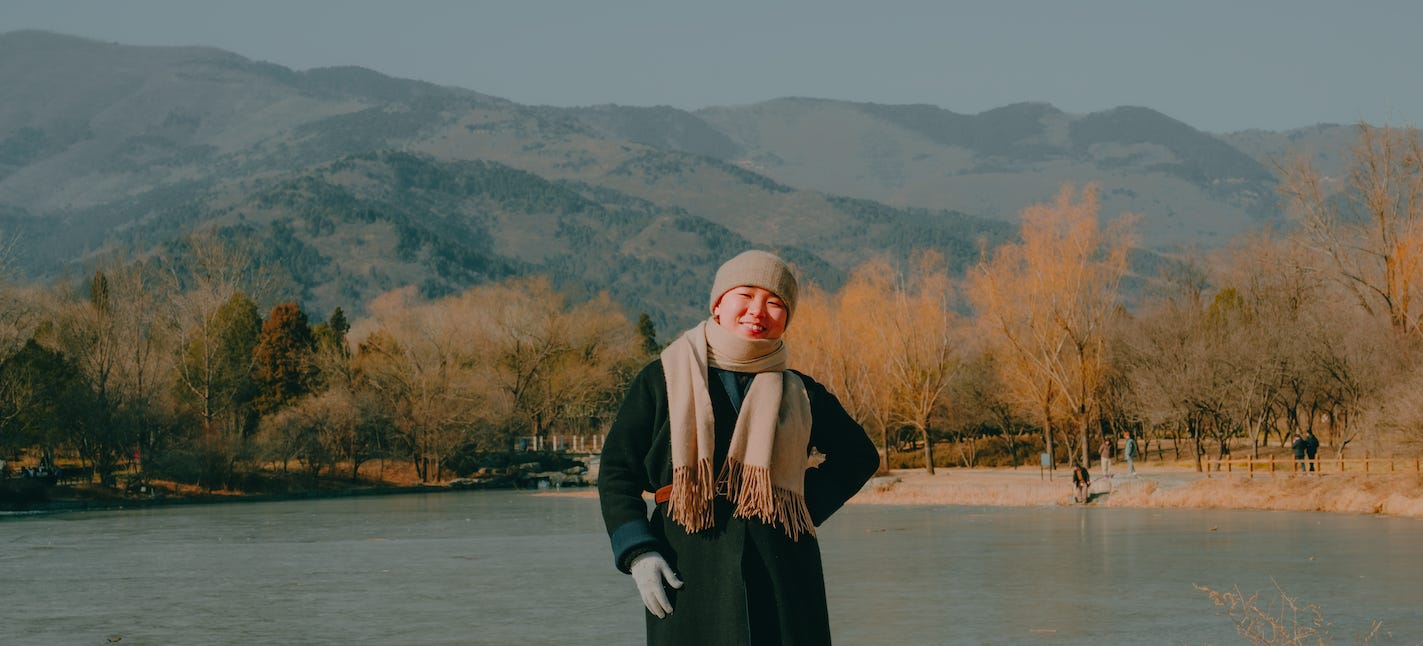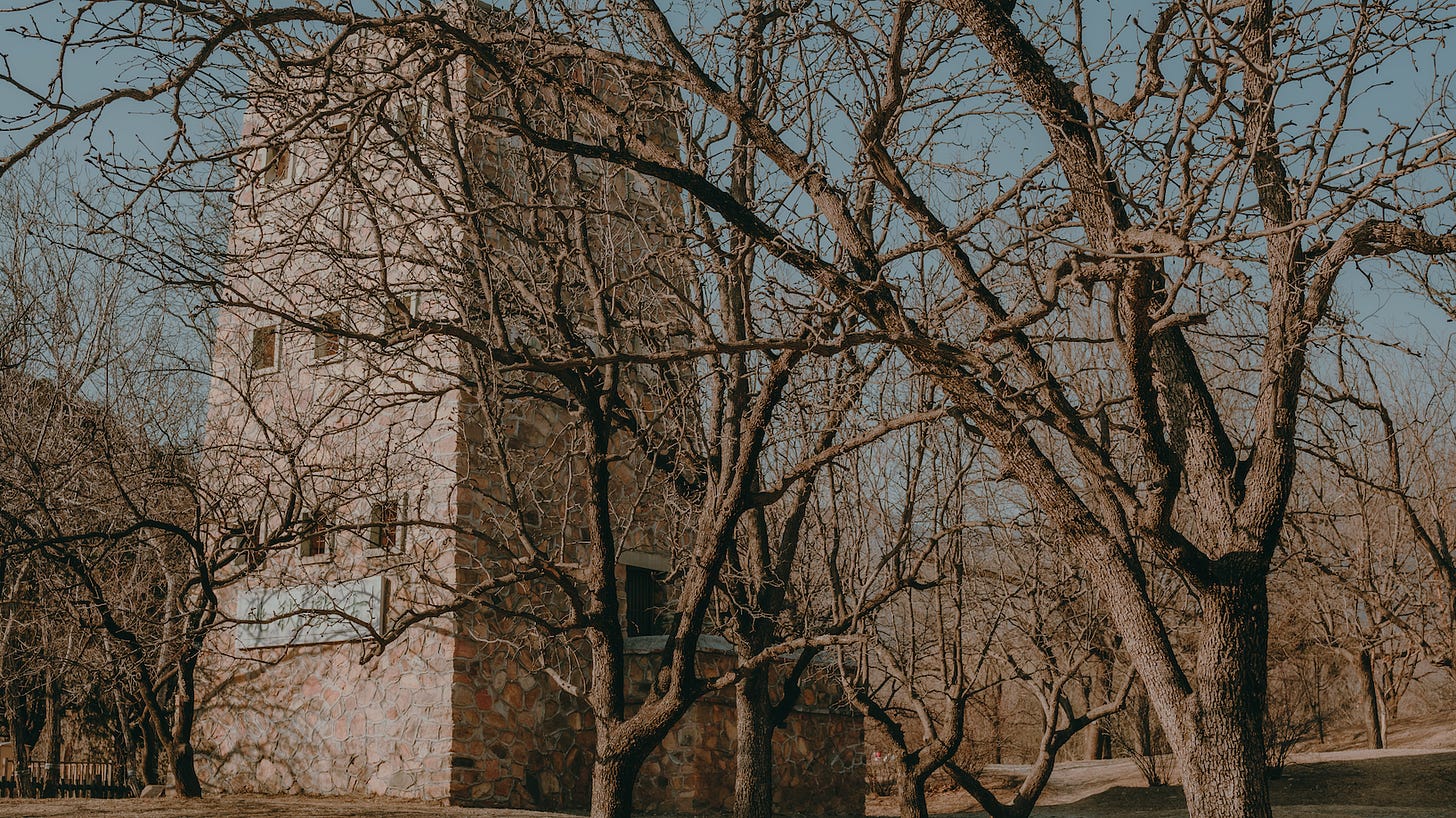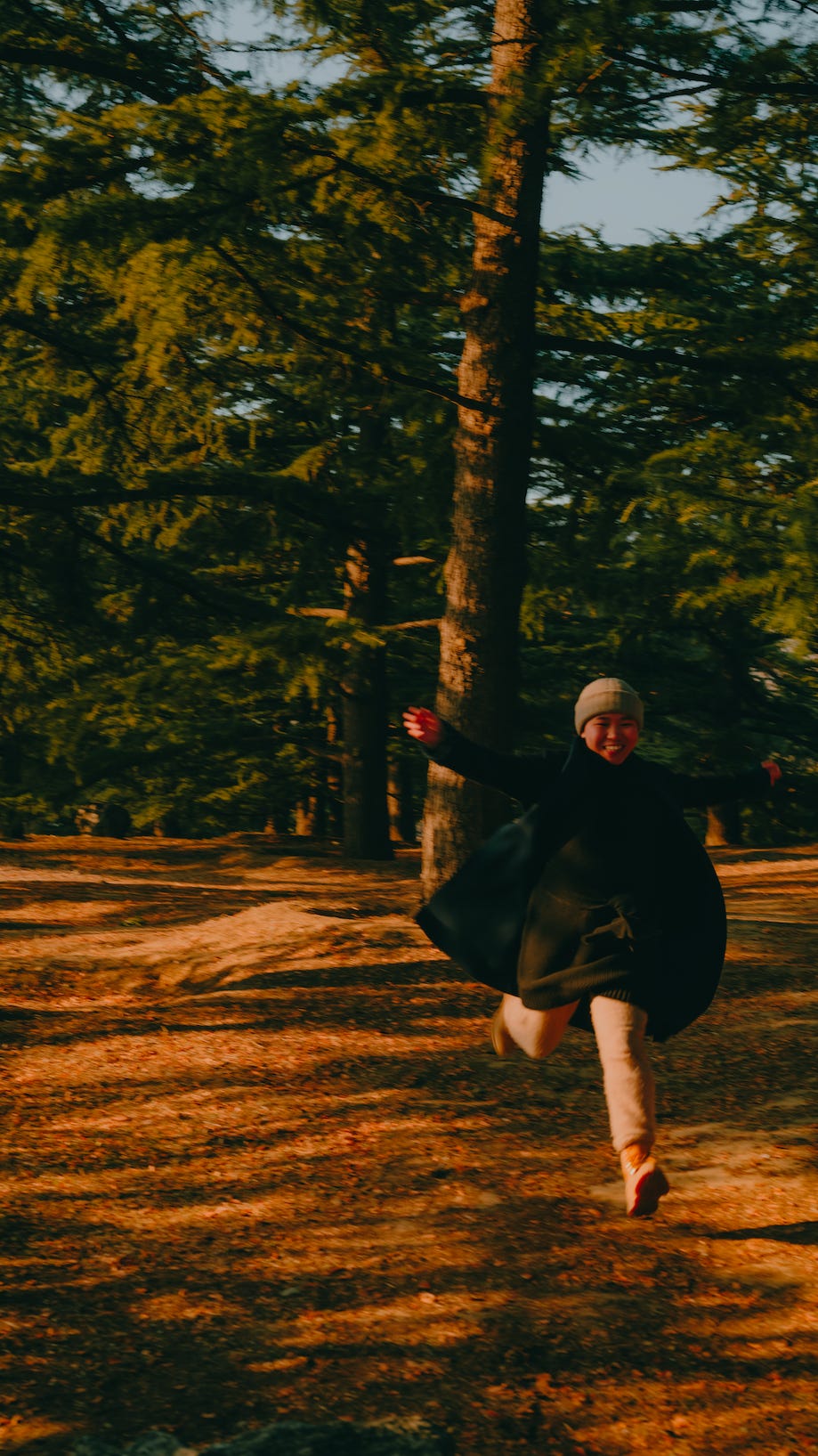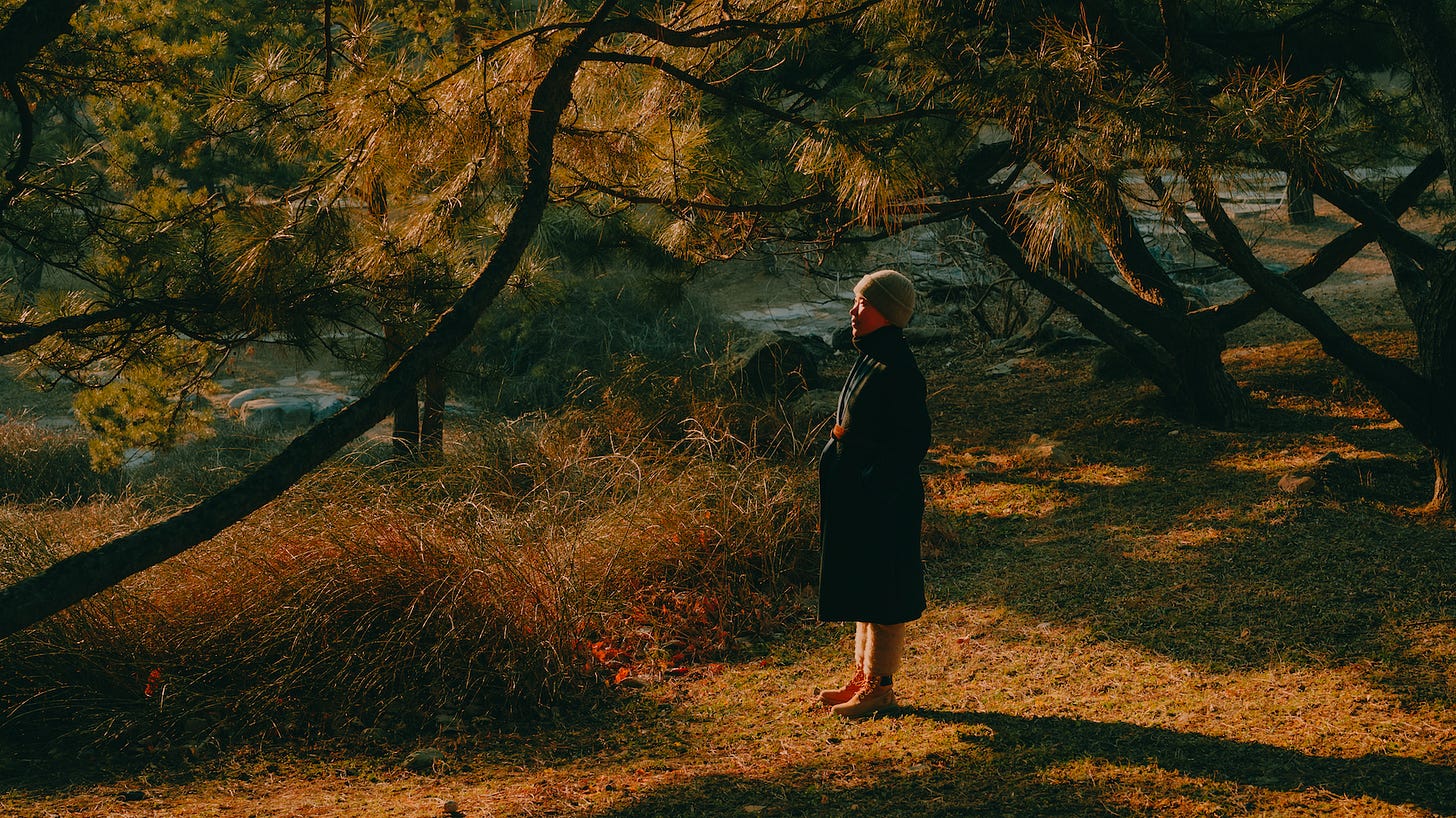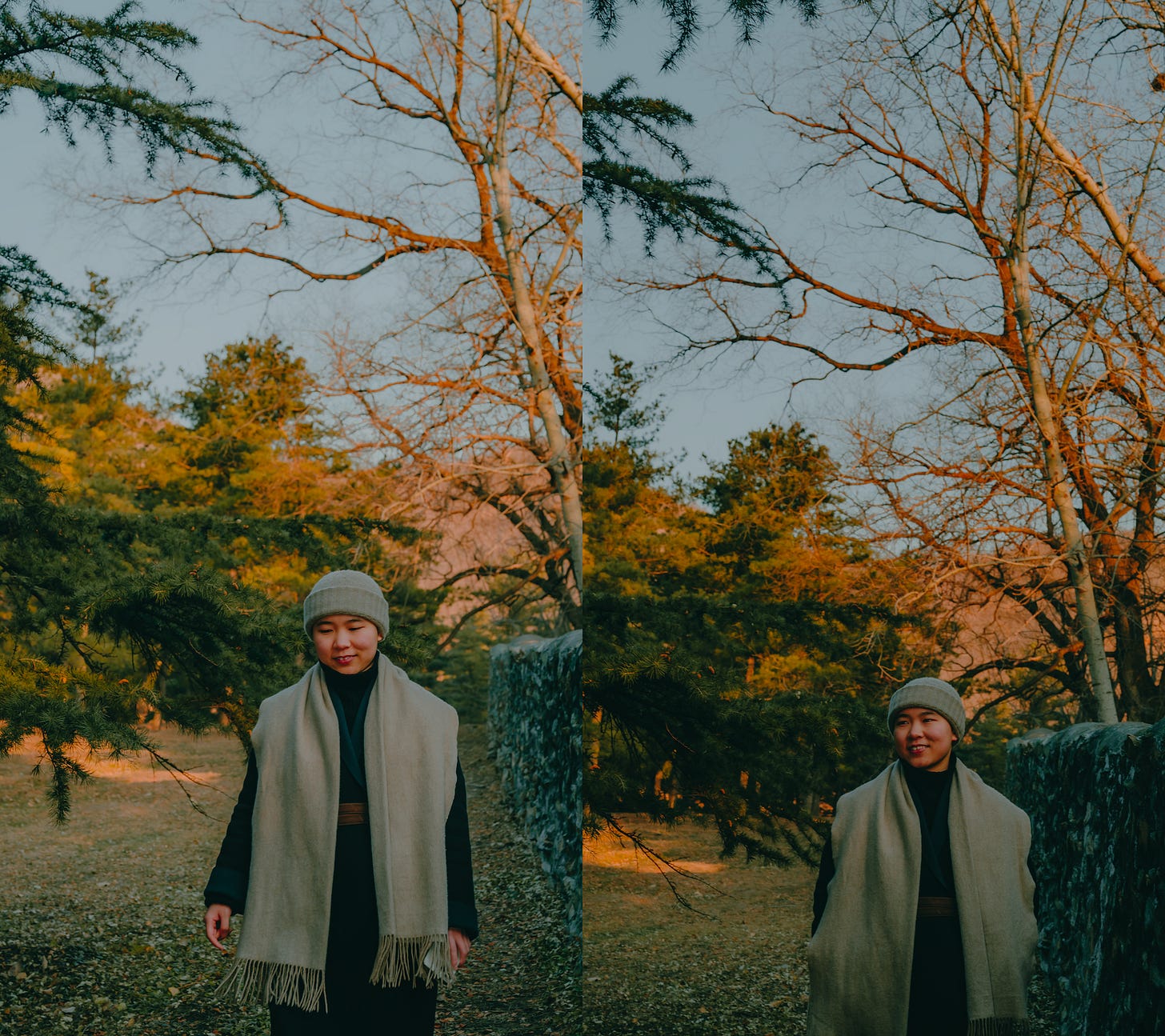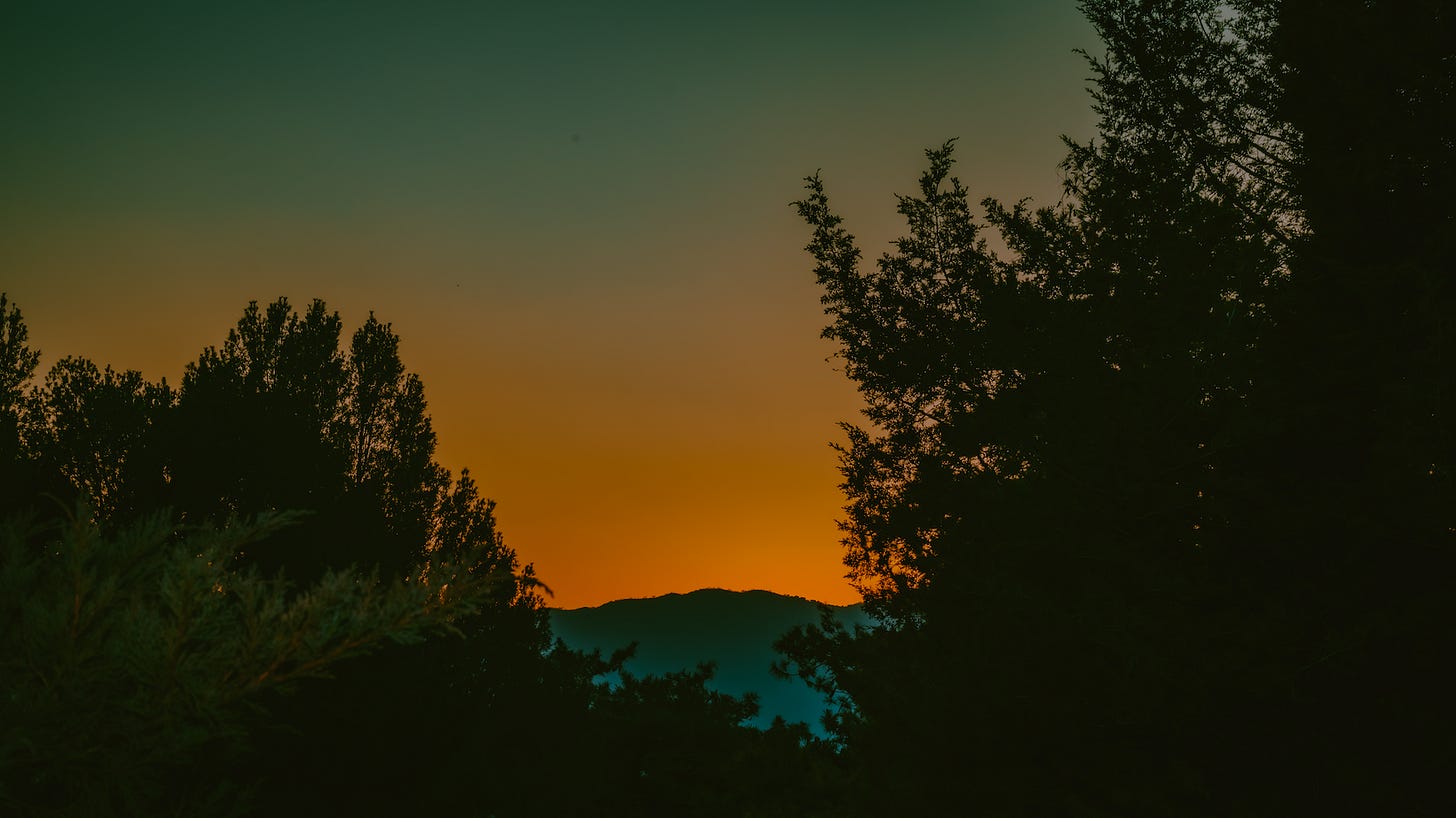China National Botanical Garden Travel Guide
On December 28, 2021, the State Council officially approved the establishment of the National Botanical Garden in Beijing. The National Botanical Garden was founded by integrating the Institute of Botany, Chinese Academy of Sciences (South Garden) and Beijing Botanical Garden (North Garden), with a total planned area of nearly 600 hectares.
This is my second visit to the North Garden of the National Botanical Garden, from 12 noon to 6 pm. The park experience was great this time, and the photos turned out beautiful, so I'm writing a special travel guide.
My first visit was in early April during early spring when cherry blossoms and apricot flowers were in full bloom, and tulips were about to open, with many tourists. I took the route on the western side through the Rose Garden-Tulip Garden-National Botanical Garden Exhibition Greenhouse-Peach Blossom Garden-Peony Garden-Viewing Pavilion-Plum Garden-Metasequoia Forest, which is also most people's choice. This route is suitable for spring when various flowers compete to bloom.
This time, I took the eastern route through Cao Xueqin Memorial Hall-Watchtower Stone Tablet Forest-China-Soviet Friendship Apricot Grove-Tree Forest-Liang Qichao's Tomb. This route is suitable for winter now, with evergreen pines and cypresses, yellowed grasslands, and crisscrossing branches, perfectly complementing the 300-year-old history. Those who prefer cultural history and tranquility would prefer this route, with more middle-aged and elderly couples along the way.
Visiting during winter around the New Year, there are fewer people, allowing you to better experience the tranquility of history. Along the way, bird calls are clearly audible, and when taking photos, you often don't encounter other pedestrians. This is a major reason why the park experience was good this time; the quiet atmosphere of the park makes one's heart more serene. In comparison, the Summer Palace and Temple of Heaven still have quite a few people.
During my first visit, I felt the scenery at the National Botanical Garden was ordinary. Indeed, walking from the west side, the scenery is more chaotic, the trees are young, there are many tourists, and it's not good for taking photos. This time, walking from the east side, I discovered many 300-400 year old locust trees, and from the west side, you can see the mountains opposite, making for better views.
Beijing's Baiwangshan, Badaling, and the Summer Palace are my favorite places to view mountain scenery. I personally feel that mountains have more calming power than water, making the hurried urban lifestyle more steady and unhurried.
Chengjing Lake
The North Garden of the National Botanical Garden has two artificial lakes. Near the south gate is Chengjing Lake with an arch bridge in the middle, while the lake toward the mountains is called Chengbi Lake. Chengjing Lake is the first beautiful scenery you see when entering from the south gate along the eastern route. The photos below were taken next to the stone marked "Chengjing Lake," with a small shop nearby. This is also the first photo spot where many people stop, as you see the continuous mountains right upon entering.
Following the path with pedestrians in the picture, you can reach Chengbi Lake. We took a detour via the Cao Xueqin Memorial Hall before reaching Chengbi Lake.
Cao Xueqin Memorial Hall
I always thought Cao Xueqin wrote "Dream of the Red Chamber" in Nanjing, related to the Jiangnan Imperial Silk Manufacturing Bureau, but after reading detailed biographies, I learned he was born in Nanjing and lived there for 13 years as a child. During the Kangxi era, his clan was doing well, with ancestors holding important positions at the Jiangnan Imperial Silk Manufacturing Bureau. Later, during the Yongzheng era, the family declined, so they moved from Nanjing back to Beijing via the Grand Canal. He later held a position at the Zhengbaiqi Camp in the Western Hills of Beijing and often played with friends nearby. This memorial hall was his friend's residence, where one wall has rhombus-shaped phrases he inscribed 300 years ago. "Dream of the Red Chamber" was created while Cao Xueqin was near the Western Hills.
When I was in Nanjing before, I visited the Jiangnan Imperial Silk Manufacturing Bureau, which was clean and quiet despite being in the city center. I've always had a good impression of Nanjing—very Buddhist yet wealthy. I've visited major shopping malls in Nanjing, Shanghai, and Beijing, but still prefer Nanjing's Deji Plaza, no wonder it's called "Golden Nanjing." Nanjing also has close ties with Hong Kong, with strong consumer spending.
At the entrance are two century-old trees, both with different degrees of hollow trunks, possibly due to fungus. The middle branch of this tree feels like a new tree growing on the original one, standing perfectly straight. Very nice.
The memorial courtyard looks small from the front, but surprisingly has 3 rows of buildings inside. The bamboo in front of the courtyard, the planted trees, the wooden window frames inside, and the stone tablets in the back yard remind me of the rural house scenery from my childhood.
The difference is that our houses didn't have kang bed-stoves, the courtyards were larger, and there was only one row of buildings, unlike northern houses with several rows, even extending east-west. The small alley in the photo below is also my first time seeing something like this.
Chengjing Lake
The North Garden of the National Botanical Garden has two artificial lakes. Near the south gate is Chengjing Lake with an arch bridge in the middle, while the lake toward the mountains is called Chengbi Lake. Chengjing Lake is the first beautiful scenery you see when entering from the south gate along the eastern route. The photos below were taken next to the stone marked "Chengjing Lake," with a small shop nearby. This is also the first photo spot where many people stop, as you see the continuous mountains right upon entering.
Following the path with pedestrians in the picture, you can reach Chengbi Lake. We took a detour via the Cao Xueqin Memorial Hall before reaching Chengbi Lake.
Cao Xueqin Memorial Hall
I always thought Cao Xueqin wrote "Dream of the Red Chamber" in Nanjing, related to the Jiangnan Imperial Silk Manufacturing Bureau, but after reading detailed biographies, I learned he was born in Nanjing and lived there for 13 years as a child. During the Kangxi era, his clan was doing well, with ancestors holding important positions at the Jiangnan Imperial Silk Manufacturing Bureau. Later, during the Yongzheng era, the family declined, so they moved from Nanjing back to Beijing via the Grand Canal. He later held a position at the Zhengbaiqi Camp in the Western Hills of Beijing and often played with friends nearby. This memorial hall was his friend's residence, where one wall has rhombus-shaped phrases he inscribed 300 years ago. "Dream of the Red Chamber" was created while Cao Xueqin was near the Western Hills.
When I was in Nanjing before, I visited the Jiangnan Imperial Silk Manufacturing Bureau, which was clean and quiet despite being in the city center. I've always had a good impression of Nanjing—very Buddhist yet wealthy. I've visited major shopping malls in Nanjing, Shanghai, and Beijing, but still prefer Nanjing's Deji Plaza, no wonder it's called "Golden Nanjing." Nanjing also has close ties with Hong Kong, with strong consumer spending.
At the entrance are two century-old trees, both with different degrees of hollow trunks, possibly due to fungus. The middle branch of this tree feels like a new tree growing on the original one, standing perfectly straight. Very nice.
The memorial courtyard looks small from the front, but surprisingly has 3 rows of buildings inside. The bamboo in front of the courtyard, the planted trees, the wooden window frames inside, and the stone tablets in the back yard remind me of the rural house scenery from my childhood.
The difference is that our houses didn't have kang bed-stoves, the courtyards were larger, and there was only one row of buildings, unlike northern houses with several rows, even extending east-west. The small alley in the photo below is also my first time seeing something like this.
Watchtower Stone Tablet Forest
Coming out of the memorial hall, you reach the watchtower. Originally built to attack the Tusi in the southwest region, Emperor Kangxi constructed more than 60 watchtowers in the Western Hills for military training. The flat-topped ones are Tibetan watchtowers, while the pointed ones are Qiang ethnic watchtowers. Next to this watchtower is an ancient well, said to have provided water that Cao Xueqin once drank. Last summer, while passing through a forest near the foot of the mountain in Western Hills National Forest Park, I saw locals carrying water buckets to collect mountain spring water.
I used to find the 3-meter-high tombstones in Edinburgh's Greyfriars Kirkyard and Glasgow Necropolis quite impressive, with their tombstones turned black from prolonged rain erosion, giving them a Gothic atmosphere. The Chinese version is these sand-colored stone tablets carved with dragon patterns, some with longevity turtles underneath. They're scattered around, not concentrated together; if they were gathered, they would be quite impressive too.
Chengbi Lake
From the watchtower stone tablet forest, turning west will bring you to Chengbi Lake. Sitting on the bench to rest while looking at the mountains across the water is wonderful. The mountains here are also a bit higher.
We returned from the opposite side, where there's a regular rectangular pool about 4m wide along the shore, likely artificially carved. You can see that this year's ice is not thick; no wonder when I tentatively stepped onto the ice with one foot, the broadcast notified me in less than 3 seconds to return to shore.
That pool looks quite eerie—it's green, and when you stand there looking down, it's dark and bottomless, like a green abyss with no sign of life. Last spring, I was eating baked flatbread by that shore, and the water was clear blue with mallards. I wonder where these ducks go to spend the winter.
Tree Area
Continuing along the main road toward the mountains, you'll encounter this small terrace with pine trees on both sides and many chairs for resting. The mountain scenery captured here has a great sense of depth.
To the right of this small terrace is a large pine forest, probably about 100 years old, with the dark green tranquility of Nordic pine forests—you can almost imagine witches appearing.
This place is truly photogenic—it could be used for filming movies. At 4 PM, the golden sunlight shines down, creating a beautiful contrast between the warm orange tones on the ground and the deep green of the pine trees. We took the most photos in this forest. It would be a shame not to film movies in such a beautiful forest.
Guan Di Temple
This is the connecting part between the pine forest and Guan Di Temple. Even casual shots are photogenic, with an inherent cinematic storytelling quality. Great scenery, great lighting. With attractive male and female protagonists and a good script, it would definitely produce classic shots.
Just walking through this forest is a wonderful experience
In the photo below, the fenced area on the left contains another centuries-old tree, with a small temple beside it
Now only three walls with murals remain in the temple, nothing else, and it's locked
The tree directly facing this small temple is even thicker than the one at Cao Xueqin Memorial Hall, with an opening that resembles trees from horror movies
Liang Qichao's Tomb
Built by his eldest son Liang Sicheng, it has a Western style. It was built before the establishment of the Beijing Botanical Garden, and besides the tomb, it includes the adjacent tree area, making it a cemetery park rather than just a burial ground.
We went around from the back
Stone fence, with a bit of an English countryside feel. About 4m behind me, someone buried a box; stepping on it feels wrong, not solid earth
The front features the tombstone, with some of the Liang children also buried there. The largest tomb is the joint burial site of the Liang couple, all made of granite. Beside it, Liang Sicheng also built a memorial pavilion, either for providing a resting place or for securing feng shui. The architectural style is similar to Western-style buildings in Nanjing. The roads on both sides are planted with pines and cypresses. There are also some stone tablets supported by longevity turtles nearby
At that time, there was still some golden sunset glow shining through the tree shadows, creating dappled light spots that added depth
Walking eastward from Liang Qichao's tomb brings you to the end. Few people are encountered there, mostly elderly visitors, and at the entrance, most ticket holders are locals with 100-yuan annual passes. I personally enjoy visiting cemeteries—few people, quiet, and your walking pace naturally slows down.
Coming out of the cemetery, we encountered the sunset. Only today's photos made me realize that the blue-green mountains described in classical Chinese paintings do exist, when the sun sets on the north side of the mountains.
Epilogue
I really liked the route we took this time. Besides the western plant route in spring, the eastern route is suitable for both winter and summer. Winter is quiet with few people, while summer is shady due to the many large trees. This visit to the North Garden of the National Botanical Garden allowed me to rediscover this place, which is worth multiple visits.
WeChat: pamperherself







